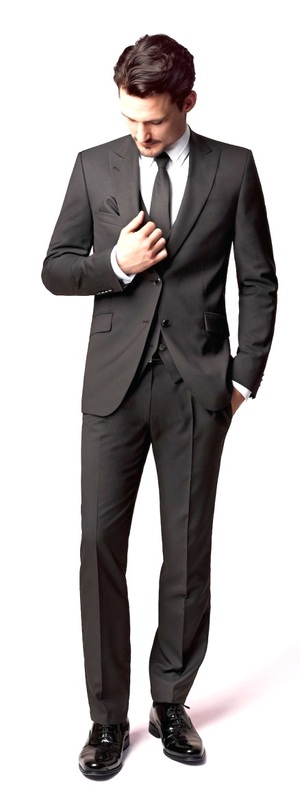By Jorge Zavala | Creative Director
It's 2016 and, yes, we all have an opinion on every matter. There is much more to writing an op-ed than simply sharing your opinion. In comparison to other non-fiction writing, op-ed pieces demand a structure, length, and voice that are all their own. Knowing how to immerse your opinion with factual information is an important part of writing op-ed pieces, and attracting readers to your story is a skill that takes time and practice to master.
Write a clear headline, but don’t expect it to make the final cut.
Writers almost never choose their own headlines. In fact, the editor won’t even consult you about the headline most of the time. This is an ancient writer/editor practice. Headlines are chosen based on space as much as anything else, and positioning. Still, you need to have a headline on your piece when you submit it. That helps the editor know what you’re up to, especially if your piece is a “click-bait” piece.
Hook the reader in right away with an anecdote.
Humorous ones work best. Then try to “show” how the story connects to an issue in the news, or of note. Wrap up it up by circling back to the joke in a new way. In my experience within the industry, the ideal length for op-eds is 800-900 words. If I’m pitching an original piece, I go as long as 1,200 words with a note to the editor saying, “This is long; I can cut.” Having a relationship with the editor is an advantage because I know she will read my work. Sunday columns are a bit longer as well because there is more space in the Sunday Review.
Tell a story that also advocates a position backed up by fact and research.
Op-ed pieces differ from other nonfiction in that it really is about opinion – you can’t just tell the story and leave it at that. The story generally comes first, along with your own charming voice, then the research.
Be aware that your opinions will be public and associated with you.
I’m the on the board of the National Autism Association, and I have to be careful. People will think that my opinions are NAA’s opinions if I write about issues pertaining to special needs' children.
As a writer, I don’t draw lines — I want to write about everything! As a public figure, I have to be careful not to damage the brand of the organization. Bottom line is, I try to be very careful, and don’t write when I’ll jeopardize the organization or my work life.
Be true to your personal writing style.
Each writer has his or her own style, of course. It might be cliché, but your best bet is to be yourself.
People can tell if you’re faking it. I bet you could read a “typical” column by one of the Times’ dozen or so regulars and know within a graph who wrote it.
Target pitches to the most relevant publications for your story.
If your story has a strong connection to a place, go to the paper in that town. You can also build a portfolio of clips starting small and going more national. If it’s your first story, it’s good way to establish your credentials.
Pitch stories tied to seasonal events a month ahead of time.
Timing is everything in pitching, as is a hook. Editors aren’t interested in your random genius.
So know that the Monday before Father’s Day, editors will be flooded with pieces about daddies. If you’re going to write a Father’s Day piece, write it in May and send it in early.
Be considerate to your editor and continue to build upon your relationship.
Be respectful and don’t be too annoying. If they encourage you, keep conversing. Be pleasant on email, but brief; keep in mind that editors are usually overworked. If they say no, accept that no means no. But if they pass on your story in a nice way, send them something else, although not right away.
The moral of the story is: you never know when the publication of your dreams will need you, so don’t lose heart. If your time is not today, it may very well be tomorrow, so keep trying. Always be polite, confident, but humble: nobody likes a know-it-all. Remember, keep things fresh and fun. Most importantly, be yourself.
About Jorge
Jorge is a Chicago-based public relations and brand management guru with 7 years of experience in the realms of branding, public relations, cross-cultural communication and advertising, and media relations. A lover of food, business, and travel, this young entrepreneur has lived in over 19 countries and visited more than 47 for both work and pleasure. Jorge spent a significant amount of time living and working in Southeast Asia where he helped victims of human trafficking establish 1 and 5 year plans to empower themselves and their communities.
In addition to his work in human rights and business development, this young man is also the lead creative director and editorial photographer for #PdMModels, a Chicago-based global scouting and fashion model management agency.
Connect with him on Instagram and Twitter.
It's 2016 and, yes, we all have an opinion on every matter. There is much more to writing an op-ed than simply sharing your opinion. In comparison to other non-fiction writing, op-ed pieces demand a structure, length, and voice that are all their own. Knowing how to immerse your opinion with factual information is an important part of writing op-ed pieces, and attracting readers to your story is a skill that takes time and practice to master.
Write a clear headline, but don’t expect it to make the final cut.
Writers almost never choose their own headlines. In fact, the editor won’t even consult you about the headline most of the time. This is an ancient writer/editor practice. Headlines are chosen based on space as much as anything else, and positioning. Still, you need to have a headline on your piece when you submit it. That helps the editor know what you’re up to, especially if your piece is a “click-bait” piece.
Hook the reader in right away with an anecdote.
Humorous ones work best. Then try to “show” how the story connects to an issue in the news, or of note. Wrap up it up by circling back to the joke in a new way. In my experience within the industry, the ideal length for op-eds is 800-900 words. If I’m pitching an original piece, I go as long as 1,200 words with a note to the editor saying, “This is long; I can cut.” Having a relationship with the editor is an advantage because I know she will read my work. Sunday columns are a bit longer as well because there is more space in the Sunday Review.
Tell a story that also advocates a position backed up by fact and research.
Op-ed pieces differ from other nonfiction in that it really is about opinion – you can’t just tell the story and leave it at that. The story generally comes first, along with your own charming voice, then the research.
Be aware that your opinions will be public and associated with you.
I’m the on the board of the National Autism Association, and I have to be careful. People will think that my opinions are NAA’s opinions if I write about issues pertaining to special needs' children.
As a writer, I don’t draw lines — I want to write about everything! As a public figure, I have to be careful not to damage the brand of the organization. Bottom line is, I try to be very careful, and don’t write when I’ll jeopardize the organization or my work life.
Be true to your personal writing style.
Each writer has his or her own style, of course. It might be cliché, but your best bet is to be yourself.
People can tell if you’re faking it. I bet you could read a “typical” column by one of the Times’ dozen or so regulars and know within a graph who wrote it.
Target pitches to the most relevant publications for your story.
If your story has a strong connection to a place, go to the paper in that town. You can also build a portfolio of clips starting small and going more national. If it’s your first story, it’s good way to establish your credentials.
Pitch stories tied to seasonal events a month ahead of time.
Timing is everything in pitching, as is a hook. Editors aren’t interested in your random genius.
So know that the Monday before Father’s Day, editors will be flooded with pieces about daddies. If you’re going to write a Father’s Day piece, write it in May and send it in early.
Be considerate to your editor and continue to build upon your relationship.
Be respectful and don’t be too annoying. If they encourage you, keep conversing. Be pleasant on email, but brief; keep in mind that editors are usually overworked. If they say no, accept that no means no. But if they pass on your story in a nice way, send them something else, although not right away.
The moral of the story is: you never know when the publication of your dreams will need you, so don’t lose heart. If your time is not today, it may very well be tomorrow, so keep trying. Always be polite, confident, but humble: nobody likes a know-it-all. Remember, keep things fresh and fun. Most importantly, be yourself.
About Jorge
Jorge is a Chicago-based public relations and brand management guru with 7 years of experience in the realms of branding, public relations, cross-cultural communication and advertising, and media relations. A lover of food, business, and travel, this young entrepreneur has lived in over 19 countries and visited more than 47 for both work and pleasure. Jorge spent a significant amount of time living and working in Southeast Asia where he helped victims of human trafficking establish 1 and 5 year plans to empower themselves and their communities.
In addition to his work in human rights and business development, this young man is also the lead creative director and editorial photographer for #PdMModels, a Chicago-based global scouting and fashion model management agency.
Connect with him on Instagram and Twitter.

 RSS Feed
RSS Feed

